Results
-
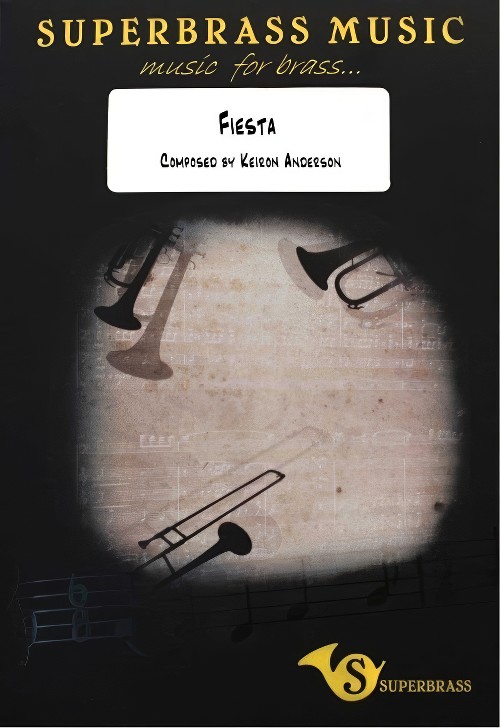 £75.00
£75.00Fiesta (Concert Band - Score and Parts) - Anderson, Keiron
This piece is a celebration and can be played at any happy occasion. It was written to celebrate 30 years of the Nottingham Symphonic Wind Orchestra in 2017. The music grows from syncopated rhythms and a five note motif which is use to form melody and chords. There is a strong rhythmic undercurrent in percussion and in the interplay between sections. The motif is clearly heard in the flutes and clarinets in an imitative section before the key changes to form a second theme on the oboe then the flute. These secondary themes are still formed from the original motif before the music recapitulates the multi time signatures from earlier in the piece. The relentless pace drives the music to a flourish of upper woodwind and a syncopated brass coda. Duration: 4.30
Estimated dispatch 7-14 working days
-
 £91.20
£91.20King Arthur - Antonio Petrillo
The legendary figure of Arthur, British leader, is mainly the result of folklore and literary invention. According to the tales Arthur, who in the most ancient sources is called "Warlord," defended Great Britain from the Saxon invaders between the fifth and sixth centuries. In the introductory measures of the piece, we can hear the basic themes developing freely one after the other. The first movement (Allegretto - march) describes Arthur with his most faithful riders galloping on his horse for simple rides in the woods or hunting moments. The second movement (Vivace - gigue), describes court dances to celebrate his victories over the Saxons. The third and last movement (Moderato - grandiose) portrays the special relationship between Arthur and Excalibur, the magical and mysterious sword that only he managed to extract from the rock before being proclaimed king. Excalibur's scabbard is said to have the power to protect King Arthur from being wounded in battle.
Estimated dispatch 7-14 working days
-
 £110.00
£110.00Mount Everest - Kees Vlak
This composition basically consists of three fragments and an epilogue (conclusion):1) Plateaux, 2) Sherpas, 3) Climb. The piece starts with a musical depiction of the deserted plateauxs and mountain peaks of the Himalayas. The mysteriousness of theTibetan country was caused by its inaccessibility to other nations. One even believed that there was a paradise behind the huge mountains; the land of Shangra La. 1) After the sound of a gong, the Asian-like theme arises extremely softly from thedecay of the percussion. In bars 4 and 5 the syllables of Hi-ma-la-ya echo. Then a second theme appears; it symbolises the enchantment of the mountaineers by seeing the Mount Everest. 2) Eastern percussion, very evenly without emotion, sound from thedeserted village of the sherpas. The phrasing is prescribed by the number 'three'. From measure 56 Tibetian monks sing a chant, also with the religious background of the number 'three'. 3) The third part starts of with the sight of the giant MountEverest with an entirely new theme, that is played impressively by the strong low brass instruments of the band, immediately followed by the excited big climbing. The many surprises are depicted by the changing time signatures. Two themes are inconstant battle; the binary Himalaya theme and the ternary Mount Everest theme. Only once there is a steely composure. The registers in which the piece is played increase. The tension rises...Then the peak is reached. A long pause follows before onerealises that one is on top of the world. Slowly the emotions of joy grow and lead to an enormous climax. The first enchanted theme sounds again in total glory.
Estimated dispatch 7-14 working days
-
 £117.00
£117.00Lincoln Portrait - Aaron Copland
Lincoln Portrait was commissioned by Andre Kostelanetz for the Cincinnati Symphony Orchestra in 1942. A stirring tribute to an eminent American, it includes fragments of songs from the Civil War era, sweeping original themes, anda narration drawn from Lincoln's own words. This transcription by Walter Beeler has become a staple in the repertoire for wind bands, and provides an impressive way to help celebrate the 200th anniversary of Lincoln's birth. Audioused with permission from the Mark Records CD: Northshore Concert Band Live at the 2001 Midwest Clinic - John Lynch, conductor - Dr. William Warfield, narrator (Score Only - 48006216/$15.50)
Estimated dispatch 7-14 working days
-
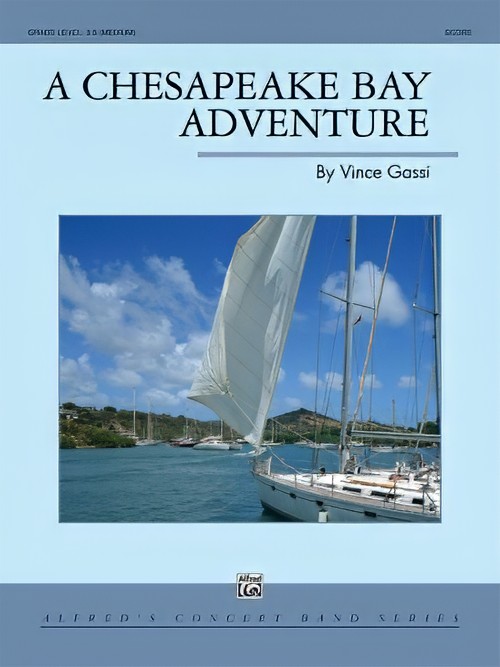 £77.50
£77.50A Chesapeake Bay Adventure (Concert Band - Score and Parts) - Gassi, Vince
This pieces takes its inspiration from the rich maritime history of the Chesapeake Bay - from colonial lighthouses to Civil War Ironclads; from its vital role in the Underground Railroad to Blackbeard and other real life pirates, Adventure is paramount as swashbuckling themes are developed in the opening and closing sections of this work and beautifully contrasted with the haunting lyrical section reminiscent of Oh Shenandoah.Duration: 5.15
Estimated dispatch 7-14 working days
-
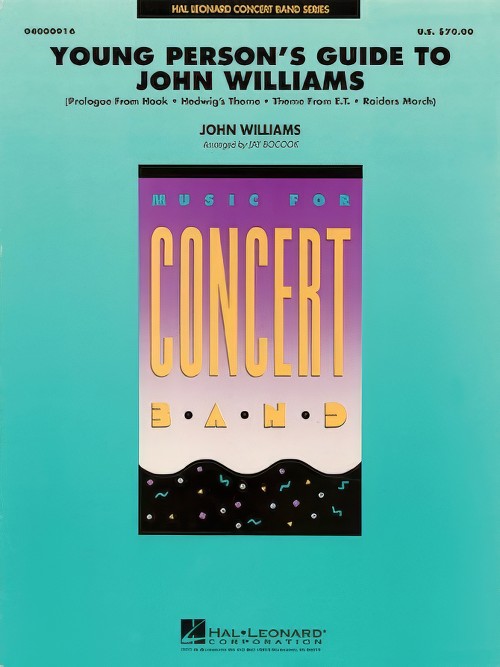 £84.99
£84.99Young Person's Guide to John Williams (Concert Band - Score and Parts) - Bocook, Jay
Young-at-heart moviegoers of all ages have been treated to the masterful movie themes of John Williams for decades. Here is a magnificent collection of some of his most memorable melodies from the silver screen.Includes:Prologue from HookTheme from E.T.Hedwig's ThemeRaiders March
Estimated dispatch 7-14 working days
-
£131.99
Instrumentalstze (Aus Dem Oratorium "Saul") - Georg Friedrich Händel
Handel's Oralorio "Saul", composed in 1739, contains a series of instrumental movements which provide commentary on the action. Composers have often written works in the form of suites from these movements. Handel's blocks of polyphonic music are also particularly suitable for wind band. His orchestral suites were usually performed in Ihe open air. Many of his themes rank among the great inventions of musical history. They give his music dignity and greatness and at the same time they remain popular in character. The instrumental movements from 'Saul' are suitable for concerts, including those in churches, for serenades and for contests from intermediate to advanced level.
Estimated dispatch 7-14 working days
-
 £84.99
£84.99Young Person's Guide to John Williams - John Williams
Young-at-heart moviegoers of all ages have been treated to the masterful movie themes of John Williams for decades. Here is a magnificent collection of some of his most memorable melodies from the silver screen.Includes the works Prologue from Hook, Theme from E.T., Hedwig's Theme and Raiders March.
Estimated dispatch 7-14 working days
-
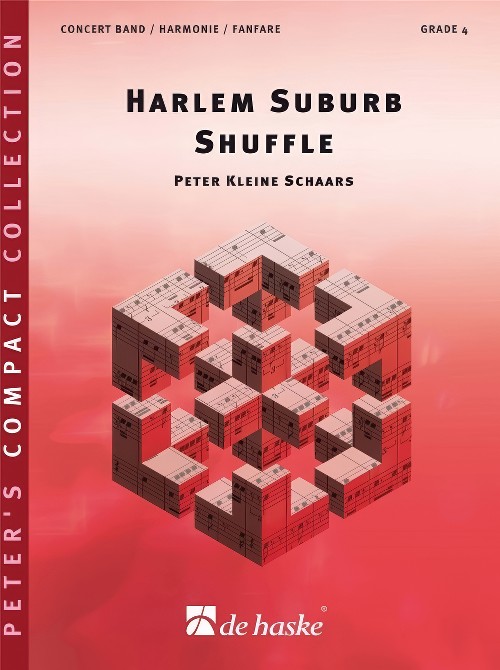 £72.99
£72.99Harlem Suburb Shuffle (Flexible Ensemble - Score and Parts) - Schaars, Peter Kleine
From the beginning of the Middle Ages, we have known performance practices in which the duration of the notes can differ from the actual notation. In some cases, binary written melodies were performed in a ternary way. This is also the case in the present-day shuffle: the written quavers are performed in a long-short system in which the ratio is 2:1. In other words, the performance practice is based on a triplet feel. In this composition, all ingredients of the shuffle are featured: a vigorous swing rhythm, a walking bass, the successions of thirds in the accompaniment and the frequent use of triplets. To make sure that the binary written rhythms in the accompaniments are performed in the correct ternary manner, Peter Kleine Schaars has notated the melody themes in triplets as much as possible. Thus, this composition is a very useful exercise for the swing development of your ensemble. Additionally, the work is a treat to listen to, so your audience will really appreciate this up-tempo big band like composition. All ternary rhythmic cells 17 till 24 pass in revue, further more much attention had been paid to a correct performance of cell 4 in swing feel.Duration: 3.00
Estimated dispatch 7-14 working days
-
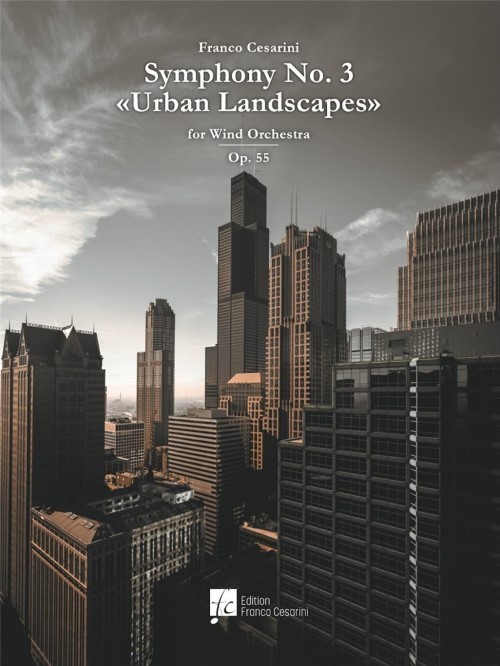 £407.00
£407.00Symphony No.3 (Urban Landscapes) (Concert Band - Score and Parts) - Cesarini, Franco
Fascinated by the beauty of Chicago, Franco Cesarini has translated his emotions into music: this is how Symphony No. 3 "Urban Landscapes" Op. 55, was born, a musical portrait of this metropolis overlooking Lake Michigan. The composition is divided into three movements: The Wrigley Building from Dawn to Noon, Blue Silhouette and Cloud Gates, which by sharing the same thematic material arranged in cyclical form, strengthen the overall cohesion of the piece. The first movement, preceded by a short slow introduction in which the main theme is presented in an almost dreamlike form, metaphorically represents the city at dawn. The sudden change of time symbolizes the start of activities with all its noises and sounds: you can hear the bell that announces the closing of the subway doors, the sound of cars speeding by, the siren of a patrol car. If the first movement represents the day, the second introduces a nocturnal environment: a melancholic melody played by the English horn anticipates a more animated tempo depicting melodies coming from jazz clubs. Powerful fanfares that take up the second theme of the first movement introduce the third movement. In this finale, the role of the two themes is reversed compared to the first movement and one takes the place of the other in a kind of games of mirrors. Symphony No. 3 "Urban Landscapes" Op. 55: a sumptuous musical portrait of the "Windy City". Duration: 27.00
Estimated dispatch 7-14 working days
